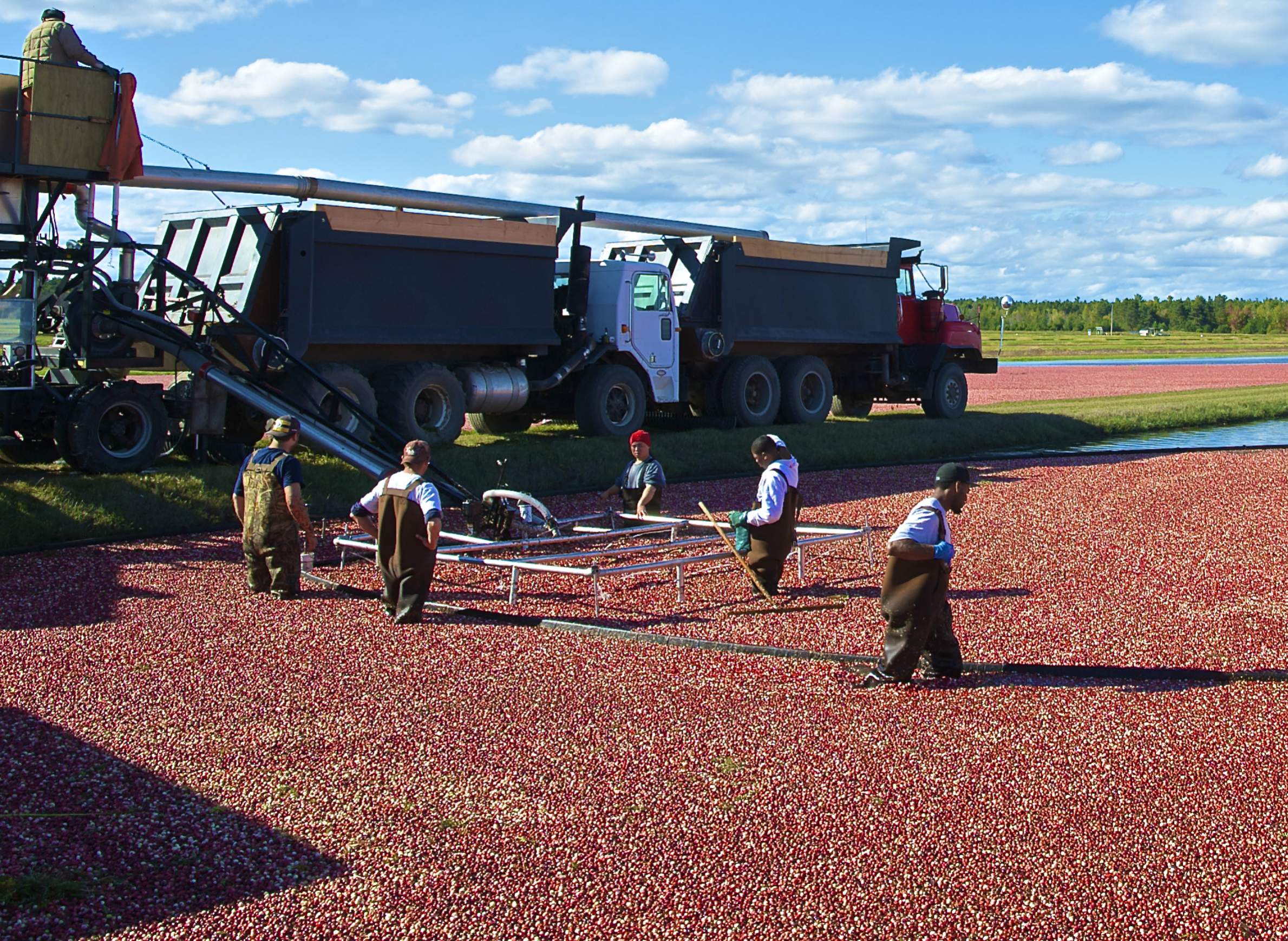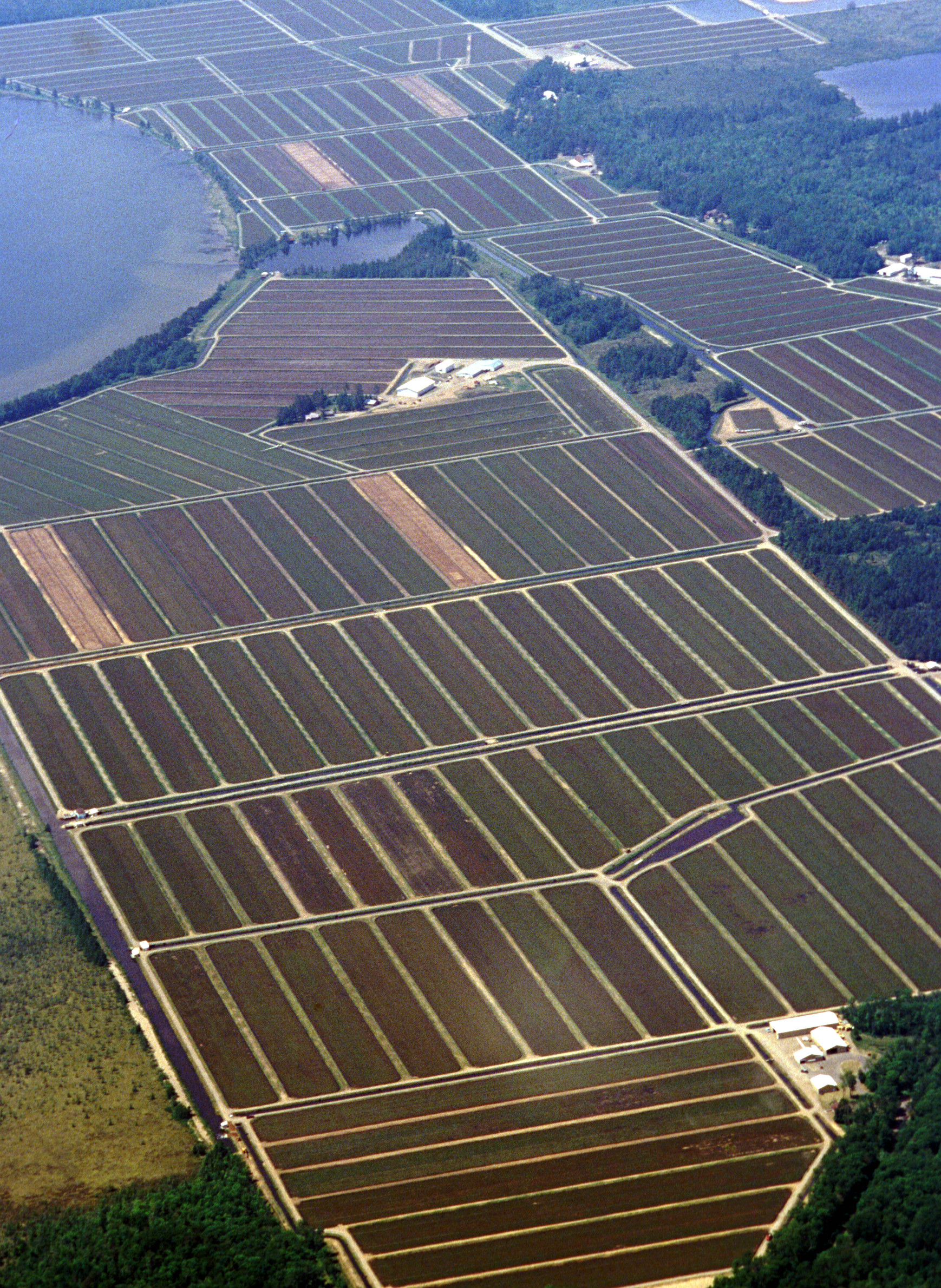
The Transformation Of Wisconsin's Cranberry Harvest

The cranberry crop at harvest is beautiful. Blue sky reflected on the water, bright red fruit and the autumn leaves of surrounding trees create an image as colorful as its history.
In the crop's early years in Wisconsin, large groups of seasonal workers would put in long days, beginning early in September and continuing through late October, bringing the fresh fruit harvest home so cranberries could brighten Thanksgiving tables. The workers slept in dormitories and ate together, cafeteria style, passing the evening hours with a standard fare of storytelling and music.
The harvest was hard, done by hand with a cranberry rake. Workers moved through cranberry bogs in long rows, sweeping back and forth as the fingers on the rake popped the fruit off vines and into an attached scoop basket. The gathered fruit was transferred to crates, carried off the marsh by hand and loaded into the one hundred pound barrels that became the standard unit of measure in the industry. Starting at remote train stations near the bogs, the barrels traveled to cities, where the fruit could only be purchased in bulk, raw and unprocessed.
Between the early 1900s and present day, the state's cranberry yield grew tenfold, from an average of around 20 barrels per acre to 240 barrels or more. The amount of land devoted to the crop grew as well, increasing from about 12,000 acres was in 1929 to some 40,000 acres in the 21st century. As yields and acreage increased, so did the availability of cranberries.
The combination of an increased yield per acre and growth in the amount of acreage used to grow cranberries overwhelmed the capacity of the workers who harvested the crop by hand.
Other contemporary cranberry growing practices have led to greater production. In the winter, planned flooding encapsulates vines beneath ice and protects them against cold damage. Harvest yields also benefit from the selective study by growers, who cultivate vines for good fruit color and flavor, as well as for natural hardiness and resistance to pests.
This increase in production made possible the freezing and storage of cranberries for use year-round in many processed products. The sale of raw, unprocessed berries, once the only way to purchase the fruit, now accounts for just 3-4 percent of the total use of the crop each year. Today, the largest uses of cranberries include sweetened dried fruit and juice-based beverages.
Cranberries changed considerably as they became a symbol of Wisconsin. What was once a wild crop is today protected from weeds and drought, and what were once sparse plants are now thick, dense mats of vines.
Matt Lippert is an agriculture agent with the University of Wisconsin Extension-Wood County.



